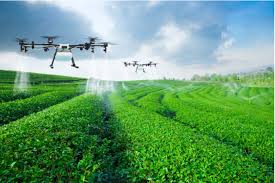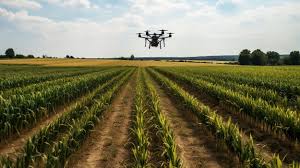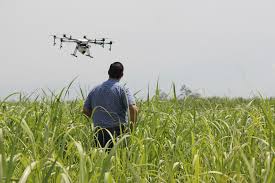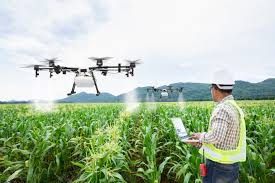Precision agriculture uses technology and data to enhance farming practices, aiming to increase efficiency and crop yields. While it offers numerous advantages, there are also limitations and challenges that farmers must navigate. This article explores these potential limitations in detail.
Overview of Precision Agriculture Technologies
Several technologies contribute to precision agriculture:
1. GPS and GNSS Technologies: These systems enable farmers to map fields accurately and monitor crop performance. They help in guiding machinery with high precision, reducing overlaps and gaps during planting and harvesting.
2. Remote Sensing: Drones and satellite imagery provide valuable information about crop health, soil conditions, and moisture levels. Farmers can identify issues early and make timely interventions.
3. Soil and Crop Sensors: These sensors measure soil moisture, nutrient levels, and crop growth in real-time. This data helps farmers tailor their management practices to meet specific needs.
4. Variable Rate Technology (VRT): This technology allows farmers to apply inputs (such as fertilizers and pesticides) at variable rates based on the specific requirements of different field zones.
While these technologies have the potential to transform farming, they also come with challenges and limitations.
Economic Constraints in Precision Agriculture

1. High Initial Investment: Implementing precision agriculture technologies can be expensive. The costs of equipment, software, and training can be prohibitive, especially for small-scale farmers.
2. Ongoing Operational Costs: Besides the initial investment, farmers must consider ongoing costs related to maintenance, updates, and subscriptions for software services. This can strain budgets, particularly in low-margin farming operations.
3. Return on Investment (ROI) Concerns: Farmers may be uncertain about the potential ROI from precision agriculture. If the technology does not deliver significant yield increases or cost savings, farmers may be hesitant to invest.
4. Access to Financial Resources: Many farmers may not have access to financing options that could help them adopt these technologies, limiting their ability to implement precision agriculture practices.
Technological Limitations and Challenges
1. Reliability of Technology: Precision agriculture technologies rely heavily on electronic systems and software. If these systems fail or malfunction, it can disrupt farming operations and lead to losses.
2. Technical Complexity: The complexity of precision agriculture technologies may deter some farmers. Training is often required to use these tools effectively, which can be time-consuming and may require additional resources.
3. Connectivity Issues: Many precision agriculture tools depend on internet connectivity. In rural areas where connectivity may be poor or unreliable, farmers may struggle to use these technologies effectively.
4. Rapid Technological Changes: The pace of technological advancements can be overwhelming. Farmers may find it challenging to keep up with new tools and best practices, potentially leading to underutilization of existing systems.
Data Management Issues in Precision Agriculture
1. Data Overload: Precision agriculture generates vast amounts of data, making it difficult for farmers to analyze and interpret effectively. Without proper data management systems, farmers may struggle to extract actionable insights from the information collected.
2. Privacy and Security Concerns: Data collected from precision agriculture technologies can be sensitive. Farmers may be concerned about data privacy and the potential for misuse or breaches.
3. Integration Challenges: Farmers often use multiple tools and platforms for precision agriculture, leading to difficulties in integrating data from different sources. Lack of interoperability can hinder the effectiveness of data-driven decision-making.
4. Skill Gaps: Analyzing data effectively often requires specific skills and knowledge. Farmers may need training in data analytics to utilize the information fully, which can be a barrier to effective implementation.
Read Also: 15 Medicinal Health Benefits Of Comfrey (Symphytum officinale)
Environmental Concerns and Sustainability

1. Chemical Runoff: While precision agriculture aims to reduce input use, improper application can still lead to chemical runoff into nearby waterways. This can harm aquatic ecosystems and degrade water quality.
2. Soil Health: Over-reliance on technology may cause some farmers to overlook traditional soil management practices, which can lead to soil degradation over time. Sustainable practices like crop rotation and organic amendments should not be neglected.
3. Biodiversity Loss: The focus on monoculture cropping in precision agriculture can diminish biodiversity. Biodiverse farming systems can be more resilient and sustainable, while monocultures are more vulnerable to pests and diseases.
4. Energy Consumption: Precision farming technologies often rely on high energy consumption for data collection and processing. This may lead to an increased carbon footprint if renewable energy sources are not utilized.
Impact of Regulatory and Policy Frameworks
1. Compliance Costs: Farmers may face significant costs to comply with various environmental regulations and standards associated with precision agriculture. These costs can deter adoption, particularly for smaller operations.
2. Changing Regulations: Rapid changes in agricultural policies can create uncertainty for farmers. If regulations become more stringent, farmers may need to invest additional resources to comply, which could impact their profitability.
3. Support Programs: Government support programs can promote or hinder the adoption of precision agriculture. If funding and resources are not directed toward precision technologies, farmers may struggle to implement them effectively.
4. Research and Development: Policies that prioritize research in sustainable practices can foster innovation in precision agriculture. Conversely, a lack of support for research may slow progress in developing new, sustainable technologies.
Read Also: Bacterial Canker (Stone fruit trees): Description, Damages Caused, Control and Preventive Measures
Farmer Adoption and Training Barriers

1. High Initial Costs: The financial investment required to adopt precision agriculture technologies can be daunting. Farmers, especially smallholders, may struggle to afford the necessary equipment and software.
2. Skill Gaps: Effective use of precision agriculture technologies often requires specific skills. Farmers may need training to understand how to analyze data and operate new systems, which can be a barrier to adoption.
3. Resistance to Change: Many farmers are accustomed to traditional farming practices. Adopting new technologies may require a shift in mindset and operations, which can be met with resistance.
4. Limited Access to Resources: Farmers in remote areas may have limited access to the resources and support needed to implement precision agriculture effectively. This can include inadequate internet connectivity, lack of training programs, and limited access to technology.
Understanding the limitations of precision agriculture is crucial for farmers considering its adoption. Environmental concerns, regulatory frameworks, and barriers to adoption can impact the successful implementation of precision farming practices.
By addressing these challenges, farmers can better harness the potential of precision agriculture to improve productivity and sustainability in their operations.
While precision agriculture offers significant potential benefits, it is essential to understand its limitations and challenges. Economic constraints, technological limitations, and data management issues can impact the successful implementation of precision agriculture practices. By addressing these challenges, farmers can better harness the advantages of precision agriculture to improve productivity, sustainability, and overall farm management.
Do you have any questions, suggestions, or contributions? If so, please feel free to use the comment box below to share your thoughts. We also encourage you to kindly share this information with others who might benefit from it. Since we can’t reach everyone at once, we truly appreciate your help in spreading the word. Thank you so much for your support and for sharing!
Read Also: Everything You Need to Know About Moen Garbage Disposal

